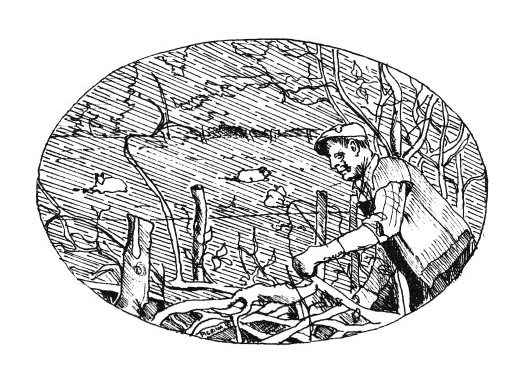OUR CHRISTMAS
3 or 4 weeks before mother would have the ingredients all ready for the Christmas puddings and mincemeat. Early November the two fat pigs had been killed. The big flitches of bacon hung on the kitchen wall. The kitchen table was pulled out in the middle of the kitchen so that you never touched them as you sat down to breakfast, or after as you stood up.
Breakfast was a serious important meal, consisting always of rashers of the bacon, and eggs (hens or ducks) fried in the lard fat that was generously swimming over thick slices of fresh baked bread on your plate.
Bacon was cured with a brine of salt. Bars of common salt – salt peter and bay salt in big leads. The bacon was turned and rubbed with the salt brine daily for a fortnight. Then a couple of times in two or three days time, then hung to dry on the kitchen wall to be cut and used as needed. It certainly was by us!
Mum, dad, four boys, Jack (the milking man) and Lou (the maid). With eight of us those flitches used to melt away but Dad always had one fat pig and most times two ready for slaughter. Pigs could be and were always slaughtered in winter, always the month with R in it. No way would any pig curing in summer be risked. Also with the flitches of bacon were the hams the next best to the pieces, I thought.
Dad guarded the hams so no one touched them. Not even Dad – only on special occasions. These were pickled in separate leads in a mixture of brown sugar, vinegar, salt, salt peter and bay salt. A saucer was used to scoop the pickle over the hams. The hams were rubbed and prodded to get the brine in and blood and the impurities out. Then, after five weeks, the hams were strung up on the wall like the bacon flitches with a strip of wood behind to keep the green bacon off the wall and to allow the air around. My if you brushed by in a hurry to meals and that stick dropped out, you were for it (a cuff or smack)!
